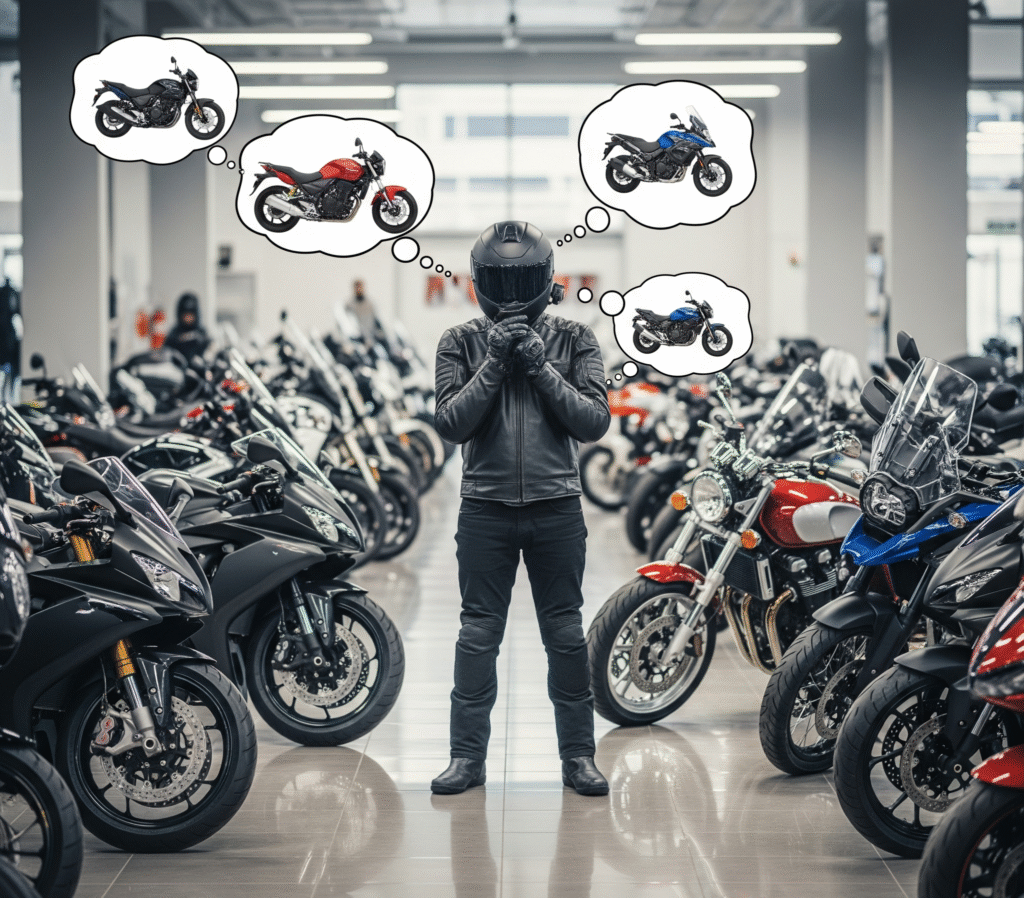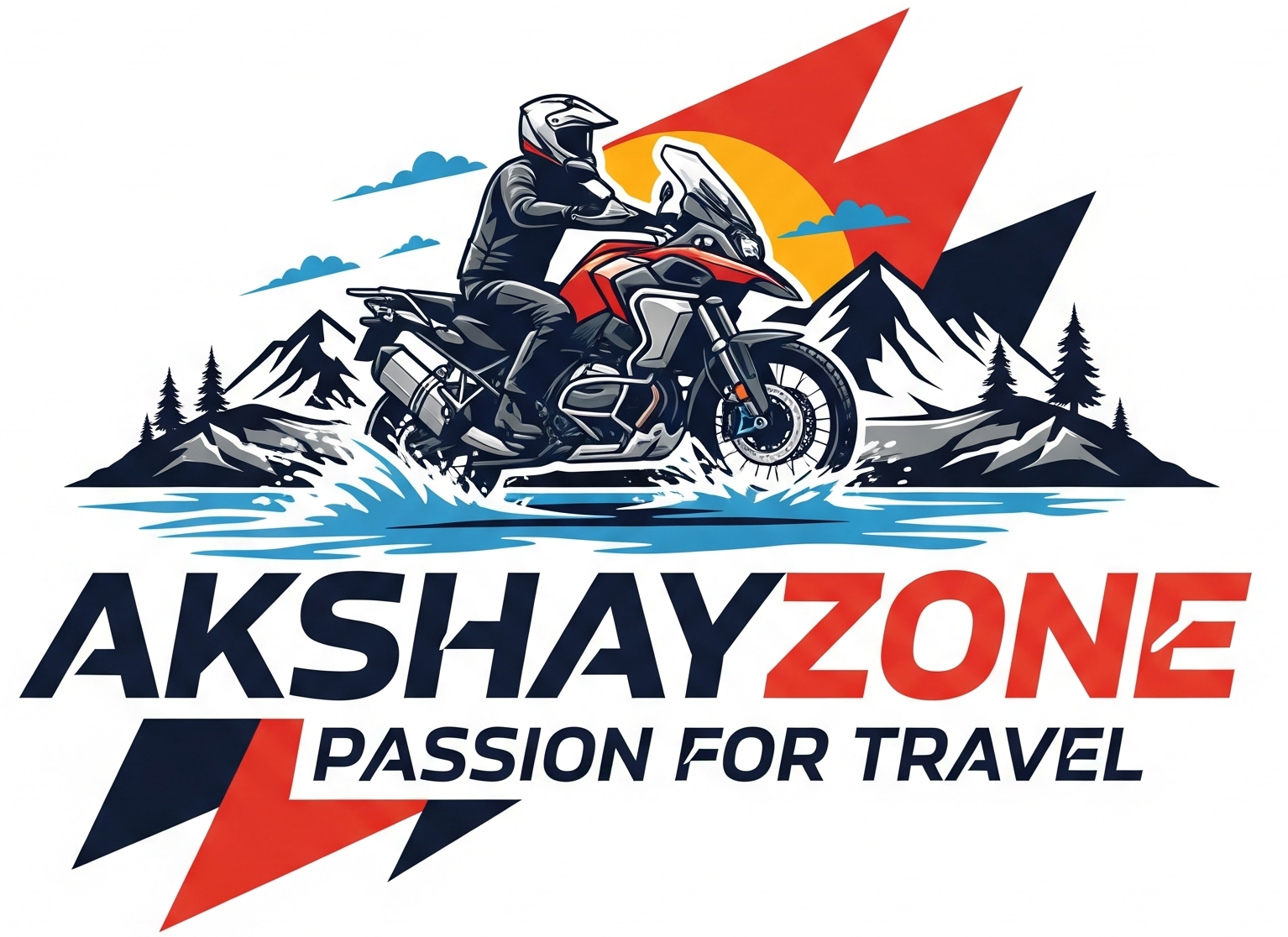
Beginner’s Guide to Motorcycling
Starting your journey into the world of motorcycling can be thrilling and a bit intimidating. This guide provides new riders with foundational knowledge and practical tips to help you begin safely and confidently.
Step-by-Step Beginner’s Guide
🛠️ Step 1: Understanding the Commitment
Motorcycling isn’t just a mode of transportation—it’s a lifestyle. Riders must be aware of the added responsibility, exposure to elements, and necessity of daily safety checks compared to driving a car.
Key Mindset Shifts:
- Visibility is lower: always assume drivers can’t see you.
- Physical involvement: you’ll need coordination, strength, and mental alertness.
- Maintenance awareness: frequent checks are required.
🏍️ Step 2: Choosing Your First Motorcycle
When starting out, the right motorcycle makes all the difference. The best beginner bikes are lightweight, manageable, and forgiving of mistakes.
Ideal Engine Range: 125cc – 500cc
Popular Beginner Motorcycles:
- Honda CB300R: Lightweight, city-friendly, and beginner-safe.
- Hero Xpulse 200 4V and 210: Lightweight, city-friendly, off-road friendly
- KTM Duke 200: Sporty handling and performance.
- Royal Enfield Meteor 350: Classic cruiser styling and long-ride comfort.
Tips:
- Test ride a few bikes at dealerships to find the best fit.
- Look for a low seat height if you’re short-height.
- Used motorcycles are great for first-time buyers as scratches and drops are common early on.
Regional Advice: In India, metropolitan cities like Delhi, Pune, and Bangalore have well-established used motorcycle markets and riding schools. Look out for RTO-accredited dealers and ask about service history. If you are in Delhi then Karol bagh is the perfect place for used bikes, but make sure to verify each and everything before your purchase. It is always advisable to buy from a known friend.
🏫 Step 3: Get Proper Training & License
Motorcycle Safety Training Programs (Highly Recommended):
- India: RTO-approved training schools
- US/Canada: Motorcycle Safety Foundation (MSF)
- UK: Compulsory Basic Training (CBT)
What You’ll Learn:
- Starting/stopping
- Turning and lane discipline
- Emergency braking and obstacle avoidance
License Procedure (India):
- Apply for Learner’s License (LL)
- Practice for 30 days
- Appear for a driving test to obtain Permanent License (PL)
🧤 Step 4: Gear Up Smartly
Never compromise on safety. Invest in the following protective gear:
| Gear Item | Description | Cost Estimate (INR) |
|---|---|---|
| Helmet | ISI/DOT/ECE certified full-face helmet | ₹1,500–₹6,000 |
| Jacket | Abrasion-resistant, armored for shoulders, elbows, back (prefer L2 level) | ₹3,000–₹12,000 |
| Gloves | Padded, knuckle-protected full-finger gloves | ₹1,000–₹3,000 |
| Pants | Reinforced riding pants or jeans with knee guards (prefer L2 level) | ₹3,000–₹7,000 |
| Boots | Over-the-ankle with firm soles | ₹2,500–₹6,000 |
Regional Tip: Quality riding gear brands available in India include Rynox, Solace, Tarmac, and Raida. Check local showrooms or online portals like PlanetDSG or Amazon India. If it is too much to invest in the beginning then least yu can buy Arm and Knee protector in place of jacket and pant.
🧠 Step 5: Road Awareness & Skills Development
Before You Hit Traffic:
- Practice in open parking lots or gated communities.
- Learn slow-speed maneuvers, balance control, and figure-8 turns.
Road Tips for New Riders:
- Avoid riding in rain or fog until you’re experienced.
- Use high-visibility clothing and reflective gear.
- Keep a 3-second distance from vehicles ahead.
Pro Tip: Always do a TCLOC Check:
- Tires & Wheels
- Controls (brakes, throttle, clutch)
- Lights
- Oil & fluids
- Chassis
📑 Step 6: Legal Documents & Insurance
Always carry:
- Driving License
- Registration Certificate (RC)
- Pollution Under Control (PUC) Certificate
- Insurance (Third-party minimum, Comprehensive preferred)
Insurance Cost Estimate: ₹800–₹2,500 annually (for beginner motorcycles)
Regional Advice: Visit IRDA-approved insurance providers such as ICICI Lombard, Digit, or HDFC Ergo for quick online policy issuance.
📋 Step 7: Practice, Then Explore
Avoid: Long highway trips or group rides initially. Start with:
- Early morning city rides
- Short countryside rides (50–70 km round trips)
Essential Tools to Carry:
- Mini tool kit
- Tyre inflator or foot pump
- Phone holder with maps
- Chain lube and microfiber cloth
Regional Tip: In Indian states like Himachal Pradesh or Uttarakhand, make sure your motorcycle complies with emission norms and that helmets are mandatory for pillions as well.
🧭 When You’re Ready to Upgrade
Once you’re confident and experienced:
- Touring Riders: Try Royal Enfield Himalayan, Honda NX500
- Adventure Riders: Check KTM Adventure 390, BMW G310 GS
- Cruising Enthusiasts: Royal Enfield Interceptor 650 or Meteor 650
Used bikes from trusted dealerships can also be a smart choice.
✅ Printable Beginner’s Rider Checklist
✅ Full-face Helmet (ISI/DOT certified)
✅ Riding Jacket with Armor
✅ Riding Gloves
✅ Riding Boots
✅ Valid License & Registration
✅ Bike Insurance (Comprehensive preferred)
✅ Tool Kit, PUC Certificate
✅ Fuel Level Checked
✅ Tire Pressure & Chain Lubed
✅ Pre-ride Brake and Light TestBy following this step-by-step beginner’s guide, you’re not just buying a bike—you’re joining a global brotherhood of riders. Stay alert, be responsible, and enjoy the sense of freedom only two wheels can provide.


